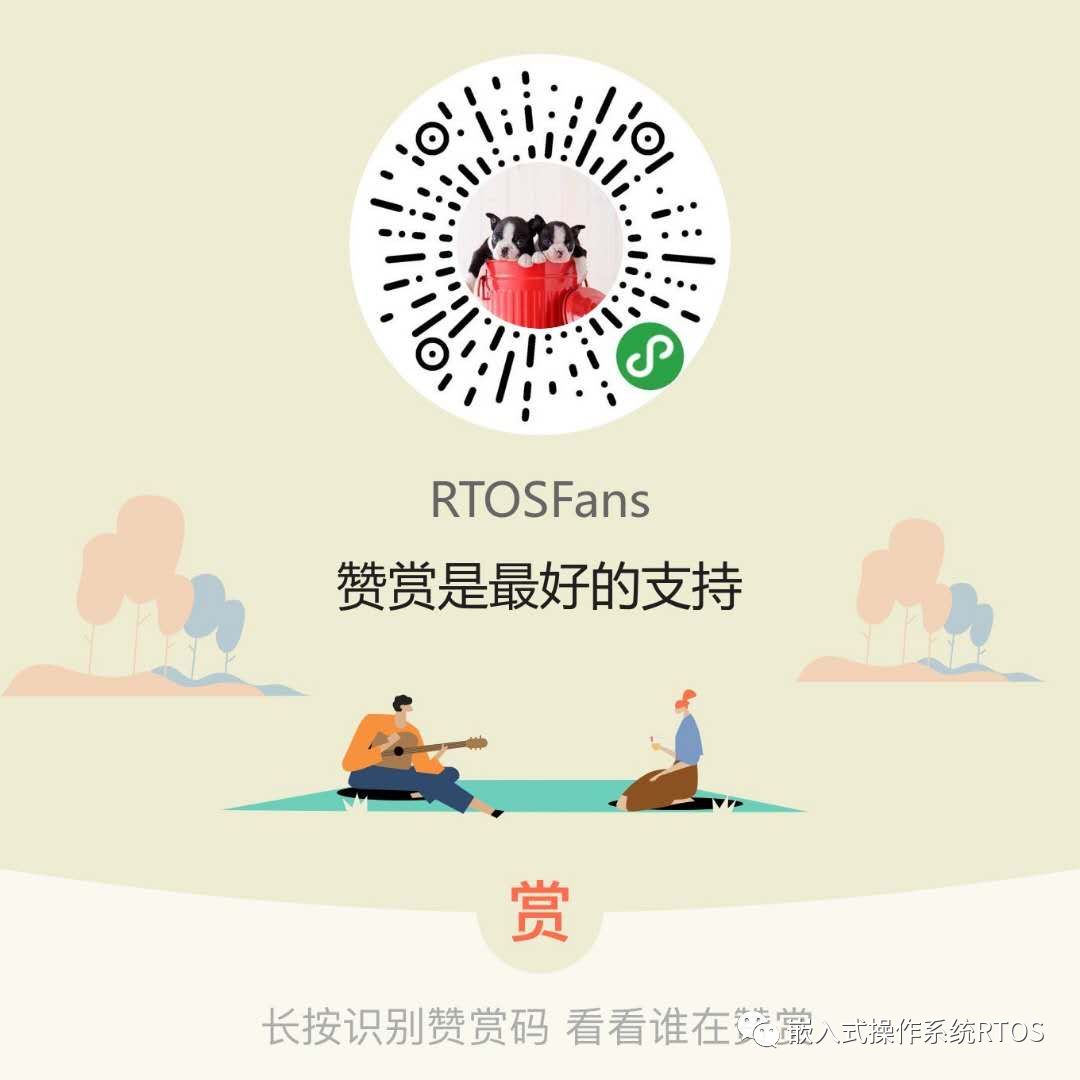When it comes to embedded real-time operating systems (RTOS), names like FreeRTOS and uC/OS may come to mind. However, many may not be aware of the domestic embedded operating systems available. Below, I will introduce several mainstream domestic embedded operating systems, which are also embracing the development of the Internet of Things (IoT) and transforming into IoT operating systems, but their core remains rooted in RTOS.
Alios Things
AliOS Things is a scalable IoT operating system under the AliOS family, aimed at the IoT field. AliOS Things is dedicated to building a cloud-integrated IoT infrastructure, featuring extreme performance, simplified development, cloud integration, rich components, and security protection. It supports terminal devices connecting to Alibaba Cloud Link and can be widely applied in smart homes, smart cities, and new mobility sectors.
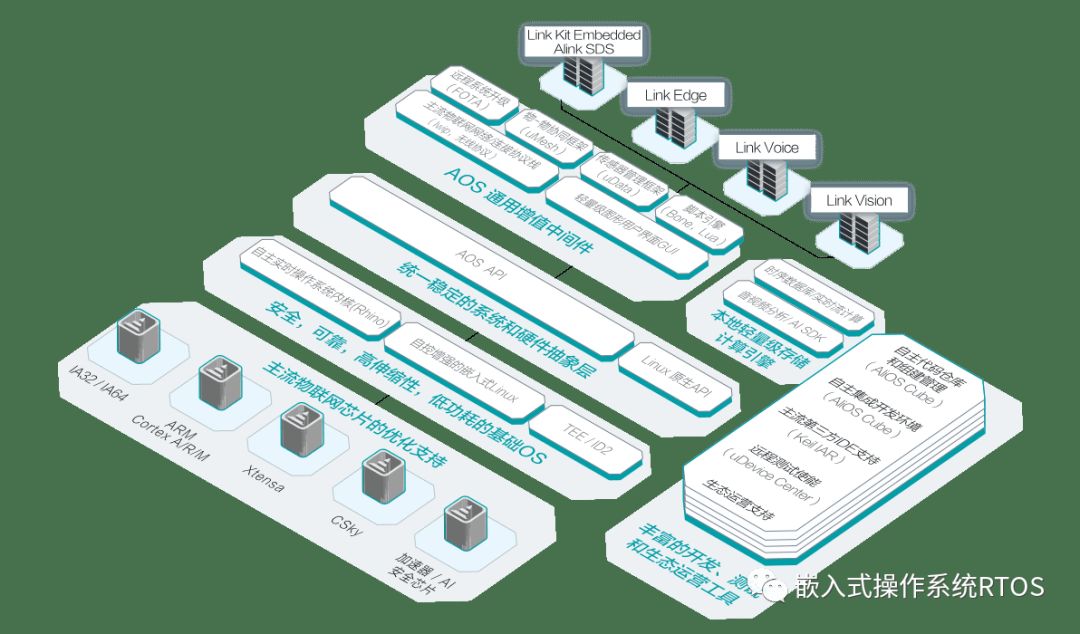
Comment: Backed by Alibaba resources, AliOS is aggressively entering the IoT market, collaborating with chip and module manufacturers, making it a strong player, but this is also its biggest disadvantage!
djyos
The Dujiangyan Operating System (abbreviated as djyos) is an open-source operating system led by Changyuan Shunrui Automation Co., Ltd. (Shunrui). It adopts the BSD license, and Shunrui will organize the djyos development team to provide technical support and maintain the open-source community. The djyos project was initiated in 2004, with the first experimental version released in 2009, and it has now been successfully applied in fields such as high-voltage relay protection.
djyos differs from traditional operating systems by replacing traditional thread scheduling with event scheduling, making it easy to learn and use, thus saving users training costs. It provides complete and efficient interrupt management, achieving the highest real-time performance in the industry, making interrupt programming easier to write. Its innovative resource management system facilitates users in designing componentized applications, reducing coupling between modules. The efficient and powerful graphical kernel allows users to easily implement stunning graphical interfaces, even enabling remote desktop functionality on microcontrollers…
Comment: djyos is an excellent OS with unique technical advantages. It is a subsidiary of Changyuan (a company under Li Ka-shing) and is relatively low-profile, with no new developments observed recently.
Huawei LiteOS
Huawei LiteOS is a lightweight IoT operating system developed by Huawei for the IoT field, featuring lightweight low power consumption, fast startup, interconnectivity, and security. It provides developers with a “one-stop” complete software platform, effectively lowering development thresholds and shortening development cycles.
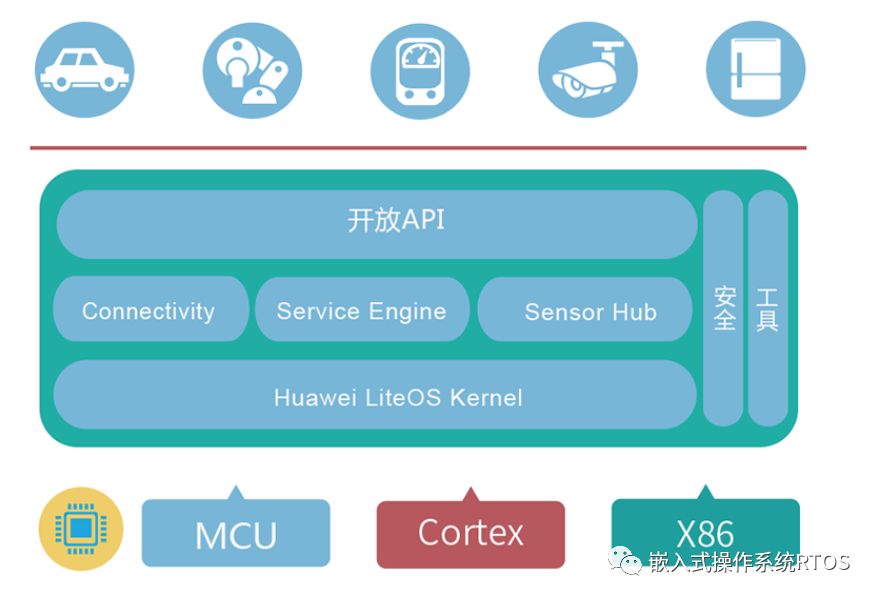
Comment: Huawei’s ecosystem is strong, but its level of openness is relatively low, primarily used for Huawei’s own products, benefiting from a large umbrella.
RT-Thread
RT-Thread is a technology platform that integrates a real-time operating system (RTOS) kernel, middleware components, and a developer community, led by Mr. Xiong Puxiang and developed with the strength of the open-source community. RT-Thread is a complete, rich, highly scalable, easy-to-develop, ultra-low-power, and highly secure IoT operating system. It includes all the key components required for an IoT OS platform, such as GUI, network protocol stack, secure transmission, low-power components, etc. After 11 years of cumulative development, RT-Thread has the largest embedded open-source community in China and is widely used in various industries such as energy, automotive, medical, and consumer electronics, with a cumulative installation base exceeding 20 million units, making it the most mature and stable open-source RTOS developed independently by Chinese developers.
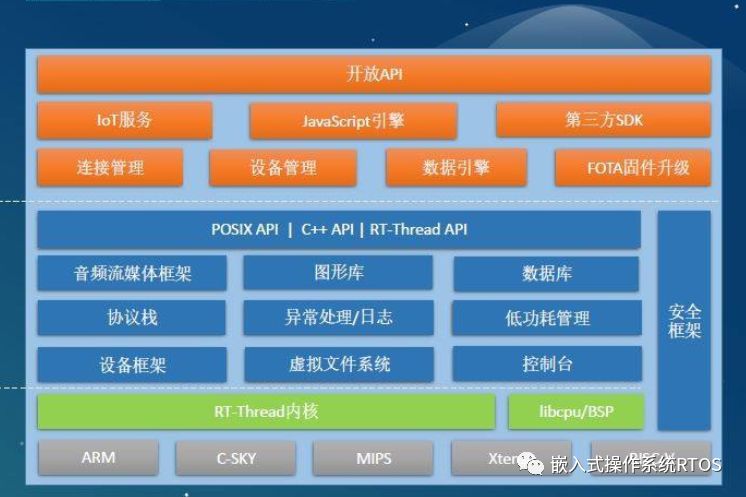
Comment: RT-Thread is the most likely to become the top player in China, with advantages in rich components and a neutral stance! It has seized the opportunity and gained support from many chip manufacturers, and is quite popular among developers. However, its documentation and tutorials are still weaker compared to FreeRTOS and similar systems.
SylixOS
SylixOS is an open-source, cross-platform large-scale real-time operating system (RTOS) that was born in 2006. After more than a decade of continuous development, SylixOS has become one of the most comprehensive domestic operating systems. It has numerous product and project application cases across various industries, including aerospace, military defense, rail transportation, smart grids, and industrial automation. SylixOS fully complies with POSIX standards, and the rich open-source community makes software porting very convenient.
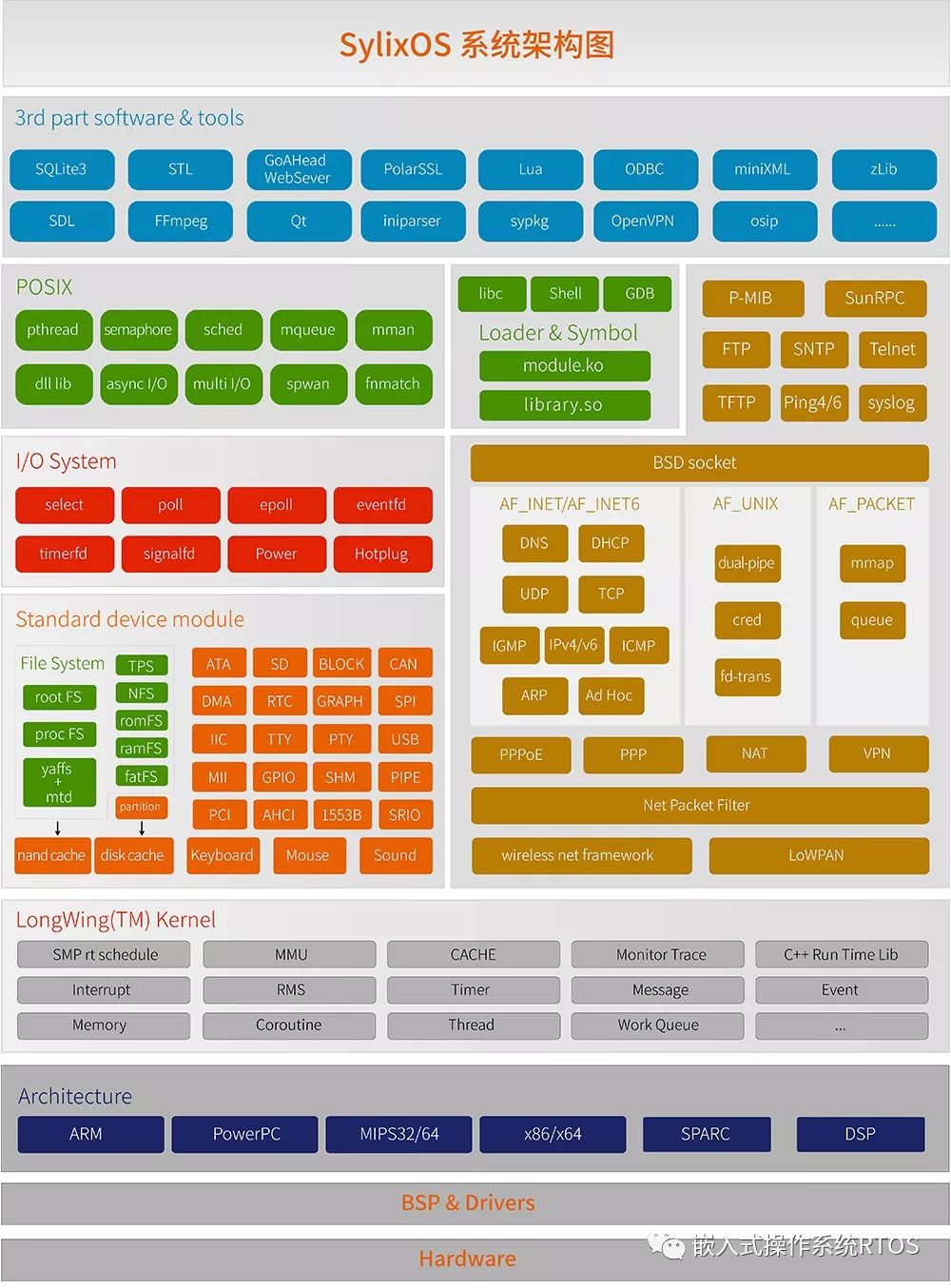
Comment: This company is also quite interesting, having started in 2006 and primarily serving the military industry, only recently gaining prominence. Its strength should not be underestimated!
